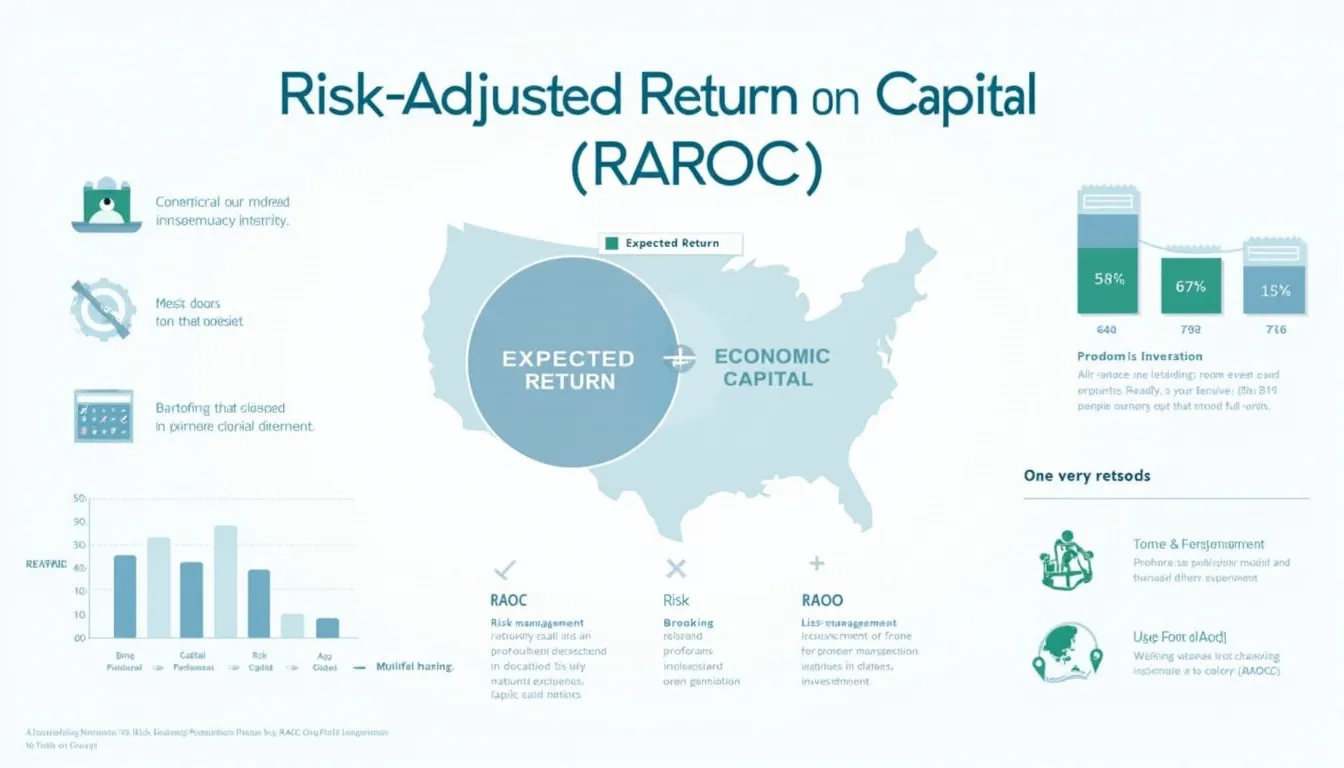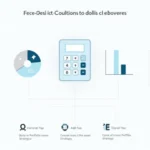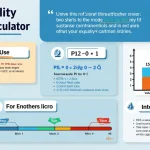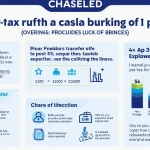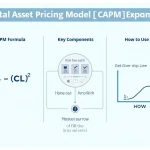Risk-Adjusted Return On Capital (RAROC) Calculator
Is this tool helpful?
How to Use the RAROC Calculator Effectively
The Risk-Adjusted Return on Capital (RAROC) Calculator simplifies the process of evaluating the profitability of investments or projects by factoring in the risk involved. To get accurate risk-adjusted metrics, follow these straightforward steps:
- Enter the Expected Return: Input the projected return as a percentage. For example, if you anticipate an 8% return, enter 8. Alternatively, you might input 12 to represent a 12% expected return.
- Provide the Economic Capital: Insert the amount of economic capital allocated in monetary units. For instance, you could enter 500000 or 1200000 depending on your capital allocation.
- Calculate the RAROC: After filling in the fields, submit the form to instantly receive the risk-adjusted return on capital as a percentage.
- Interpret Your Result: Use the displayed RAROC value to understand the profitability of your investment relative to its risk, enabling smarter capital allocation decisions.
Introduction to the Risk-Adjusted Return on Capital (RAROC) Calculator
The Risk-Adjusted Return on Capital (RAROC) Calculator is an essential financial tool designed for investors, financial analysts, and business leaders who want to assess investment performance while accounting for risk exposure. Unlike simple return calculations, RAROC provides a balanced perspective by measuring returns in relation to the economic capital put at risk.
This risk-sensitive metric supports enhanced capital allocation and risk management by offering insights into how effectively capital is generating returns after factoring in potential losses. With this calculator, you can:
- Evaluate investments on a risk-adjusted basis to avoid misleading profitability figures.
- Compare multiple projects or portfolios with varying risk exposures on equal footing.
- Improve strategic financial decisions by understanding the trade-off between risk and expected returns.
- Comply with financial regulations that require comprehensive risk measurement.
Understanding the RAROC Formula and Example Calculations
The fundamental RAROC formula is expressed as:
$$RAROC = \frac{Expected\ Return}{Economic\ Capital}$$
Where:
- Expected Return: The anticipated profit from the investment, expressed as a fraction or percentage.
- Economic Capital: The amount of capital set aside to absorb potential losses, typically in monetary units.
Example Calculation 1
Suppose you expect a return of 9% on a project and have allocated $750,000 as economic capital.
The RAROC would be:
$$RAROC = \frac{9\%}{750,000} = \frac{0.09}{750,000} \approx 0.00000012$$
This can then be multiplied by 100 to express as a percentage: approximately 0.000012%, highlighting the risk-adjusted profitability relative to capital.
Example Calculation 2
If your expected return is 15% and the economic capital is $1,200,000, then:
$$RAROC = \frac{15\%}{1,200,000} = \frac{0.15}{1,200,000} = 0.000000125$$
Multiplying by 100 converts this to 0.0000125% risk-adjusted return.
These examples illustrate how RAROC links profitability directly with the level of risk capital, enabling clear and meaningful comparisons.
Key Benefits of Using the RAROC Calculator for Financial Analysis
- Comprehensive Risk Assessment: Integrates risk considerations with returns to provide a complete picture of investment viability.
- Optimized Capital Allocation: Identifies investments offering superior risk-adjusted profitability, improving the efficiency of capital deployment.
- Standardized Performance Metrics: Enables uniform comparison across projects or portfolios with differing risk profiles.
- Supports Strategic Decision-Making: Provides actionable insights for prioritizing business lines, ventures, or asset classes.
- Regulatory Preparedness: Assists institutions in meeting compliance standards related to capital adequacy and risk control.
- Enhanced Performance Evaluation: Allows for fair assessment of traders, funds, or business units by accounting for varying risk exposures.
Practical Applications: How Financial Professionals Use RAROC
Banking and Financial Institutions
- Evaluating risk-adjusted profitability of lending portfolios and credit products.
- Pricing and capital allocation for various financial products and trading desks.
Investment Management
- Comparing mutual funds, hedge funds, or portfolio strategies based on risk-adjusted returns.
- Optimizing asset allocation to balance expected returns with risk exposure.
Corporate Finance
- Assessing potential returns on capital-intensive projects with associated risks.
- Supporting mergers and acquisitions evaluations through risk-adjusted profitability metrics.
Insurance Sector
- Pricing insurance policies with varied risk exposures.
- Measuring overall risk-adjusted profitability across insurance lines.
Individual Investors and Personal Finance
- Comparing potential investments adjusted for risk to make informed portfolio decisions.
- Enhancing personal financial planning by understanding risk-return trade-offs.
Frequently Asked Questions About RAROC
What differentiates RAROC from traditional Return on Capital (ROC)?
Unlike ROC, which measures profitability without considering risk, RAROC integrates potential losses into the calculation, providing a balanced view of risk-adjusted returns.
How is Economic Capital calculated?
Economic Capital is usually estimated using statistical models that calculate the capital necessary to cover potential losses within a confidence level, such as 99.9% over a specific time frame.
Can RAROC yield a negative result?
Yes. If the expected return is negative, resulting from losses or underperformance, the RAROC value will also be negative, signaling unprofitable risk exposure.
How frequently should RAROC be computed?
Calculation frequency depends on the organization’s needs — from daily monitoring in active trading environments to quarterly or annual reviews for strategic planning.
Is a higher RAROC always better?
Generally, higher RAROC values indicate more efficient risk-adjusted returns, but decision-makers should also weigh other factors such as market conditions, risk tolerance, and strategic objectives.
How does RAROC compare to other risk-adjusted metrics?
RAROC is one of several tools like RARORAC and Economic Value Added (EVA). Each has unique advantages depending on context, but RAROC remains widely used for capital and risk management.
Conclusion: Empowering Smarter Investment Decisions with the RAROC Calculator
The Risk-Adjusted Return on Capital Calculator is a critical addition to any financial analysis toolkit. By combining anticipated returns with risk metrics, this tool offers a clear, objective understanding of investment profitability under uncertainty.
Whether you are managing complex portfolios, evaluating new business projects, or planning personal investments, leveraging the RAROC metric can dramatically improve your risk management process. It promotes:
- More informed, data-driven financial decisions that balance risk and reward effectively.
- Optimized use of capital by prioritizing investments offering superior risk-adjusted returns.
- Greater confidence in strategic planning with a consistent framework for risk analysis.
Start applying the RAROC Calculator today to gain valuable insights into your investments and take control of your financial future with enhanced risk awareness.
Important Disclaimer
The calculations, results, and content provided by our tools are not guaranteed to be accurate, complete, or reliable. Users are responsible for verifying and interpreting the results. Our content and tools may contain errors, biases, or inconsistencies. Do not enter personal data, sensitive information, or personally identifiable information in our web forms or tools. Such data entry violates our terms of service and may result in unauthorized disclosure to third parties. We reserve the right to save inputs and outputs from our tools for the purposes of error debugging, bias identification, and performance improvement. External companies providing AI models used in our tools may also save and process data in accordance with their own policies. By using our tools, you consent to this data collection and processing. We reserve the right to limit the usage of our tools based on current usability factors.
